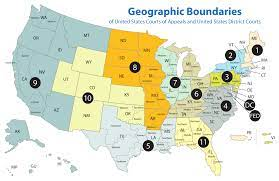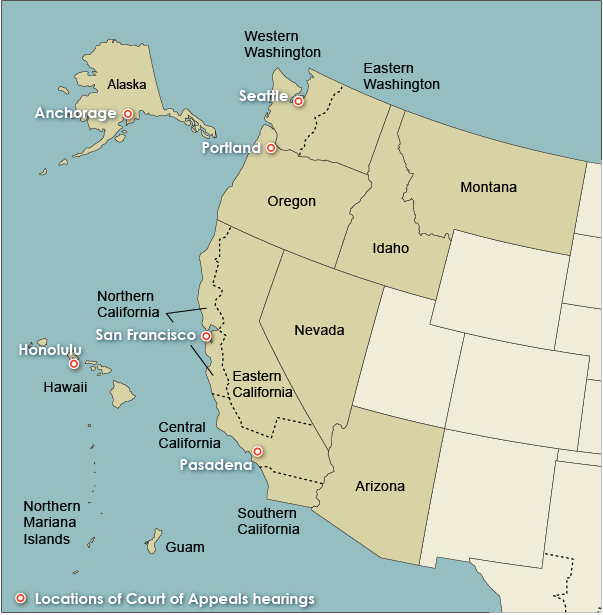
Basically, it is a historical accident with a healthy mix of partisan politics thrown into the mix. The history is recounted here. The
Circuits were much less important until the intermediate U.S. Court of Appeals for the various circuits were created by Congress, in the Judiciary Act of 1891, commonly known as the Evarts Act, established nine courts of appeals, one for each judicial circuit at the time. Before that time, circuits were simply an administrative tool of the U.S. Supreme Court for assigning work loads of justices assigned to tasks in connection with these circuits, which was adjusted from time to time with the 9th Circuit isbeing the second to last one to be created geographically defined circuitin the pre-intermediate appellate court era.
The last geographically defined circuit, the Tenth Circuit, was established on February 28, 1929, under Tenth Circuit Reorganization Act of 1929, which broke the then-Eighth Circuit into the Eighth Circuit and the Tenth Circuit.
AThe fact that the 9th Circuit has quite a few states in it really isn't the main issue. The issue is that it has a huge number of cases relative to the other circuits. As a result, a split is justified by the sound non-partisan reason that it is much larger in terms of caseload than any other circuit giving it more judges, twenty-nine, than any other circuit, and limiting the effectiveness of its en banc review process which doesn't include all sitting judges to resolve intra-circuit concerns about a three judge appeal panel's resolution of a case.

Arizona, Idaho, Montana and Alaska would like to be in a more conservative circuit. Hawaii, Washington State, Oregon, and California, are by and large, content to be in a liberal leaning circuit. Nevada is relatively ambivalent, but it is convenient for it to be in the same circuit as California because the two states have so many economic ties with each other that sharing the same body of federal precedent is convenient. Guam and the Marianas Islands, which are U.S. territories in the 9th Circuit, don't really have a say in the matter.
California is also so dominant in terms of case load, that a California plus one or more states solution for one of the resulting circuits in a split, with the remaining states in another circuit, leaves the circuit with California in it overloaded and too large, while the remaining states in the other circuit with too small of a docket.
More than 50 percent of the Ninth Circuit caseload comes from the Central District of California. This is more than the caseload of some other entire U.S. Court of Appeals circuits. California as a whole accounts for about 63% of the 9th Circuit's work, and about 13% of the number of appeals lodged nationwide.
The First Circuit, which includes Maine, New Hampshire, Massachussetts, Rhode Island and Connecticut, is the smallest of the U.S. Court of Appeals Circuits which manages with just six judges, about half as many as are necessary to consider appeals from the Central District of California alone.

